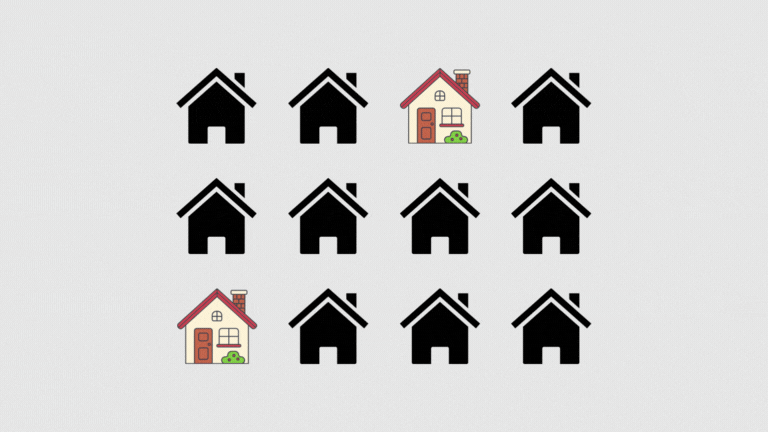How To Turn “No Damage” Storm Leads To A Future Sale

As a contractor or a company in the restoration industry, managing storm leads and staying ahead of the competition can be a challenging endeavor.
One of the most frustrating aspects is expending valuable resources on storm leads that don't convert due to a lack of immediate storm damage.
However, what if those “no damage” leads weren’t a waste? What if they could transform into easy sales after the next storm?
The Challenge of Managing Storm Leads
The traditional method of managing storm leads and clients often results in missed opportunities. Many companies abandon leads that show no immediate hail or wind damage, only to lose them to competitors when future storms hit.
This approach not only wastes your effort but also significantly impacts your bottom line.
For example, imagine you've spent significant time and money acquiring a list of potential clients. You've nurtured these storm leads, only to find there is no immediate damage to their properties.
Frustrating, right?
Worse yet, when the next storm hits, your competitor might knock on their door first, converting your lead into their customer.
Now, picture those same leads being hit by a storm months or even years later, and you’re the first to know. This timely information is only possible with HailTrace’s Impacted Asset feature, which transforms previously cold leads into hot prospects ready for conversion.
How Tracking Storm Leads For New Hail & Wind Storms Can Generates Sales
HailTrace developed the Impacted Assets feature to address these challenges head-on. This innovative tool monitors your storm leads and past customers, notifying you instantly when their properties are hit by new hail or wind storms.
Here's how this feature can revolutionize your business:
Get There First
Receive real-time alerts when your storm leads’ properties are affected, allowing you to stay ahead of the competition. Immediate action often means the difference between securing a sale and losing it to a competitor.
Create Loyalty and Sales
Regular check-ins post-storm help build trust and loyalty, ensuring you’re the first company they think of when property damage occurs. Consistent communication also reinforces your commitment to customer service.
Prioritize Valuable Storm Leads
Focus on storm leads with older roofs, discontinued shingles, or past sales to close deals more effectively. These are often the leads most likely to require significant repairs or replacements.
What Companies Are doing To Create Sales With Their Storm Leads
Contractors and companies in the restoration industry who have used our Impacted Assets feature have reported remarkable improvements.
For example, they have reported a 30% increase in sales by calling leads right after a storm. Other customers have noted that 25% of clients come back to their company for a second job or repair.
How A Customer Built A $7M Business
In a recent conversation I had, a roofing contractor shared how they built a $7M roofing company.
To my surprise, they brought up our Impacted Assets feature, not our hail or wind maps.
They went on to explain that the Impacted Asset feature allowed them to stay informed about when their leads and past clients were hit by new storms. Then with a phone call, they could create a touch point with clients or secure a sale if there was storm damage.
How A Customer Took A Repair To A Full Roof Replacement
In another scenario, a homeowner was unaware of further hail damage after a minor roof repair. Thanks to the Impacted Assets alerts, a contractor reached out and informed them.
This timely call resulted in a new roof covered by insurance—a sale that would have been missed without prompt notification of storm leads.
That is how you turn even small repairs with little profit into a full roof replacement and a life-long customer!
How Tracking Storm Leads For New Hail & Wind Storms Can Improve Your Bottom Line
Old lead management strategies cost roofing companies thousands of dollars every year.
This is because according to “Understanding Roofing Lead Costs” by Michael Park, roofers spend between $200-$500 to generate quality lead.
This cost comes from marketing to attract potential clients, paying for advertisements, or sometimes purchasing leads from third parties. Basically, it costs hundreds of dollars to send mailers or pay a sales rep to generate leads for you.
So, when you invest so much and then abandon these leads due to no immediate storm damage, you waste both time and money.
Using the Impacted Assets feature can drastically reduce your customer acquisition cost and improve your bottom line.
For example, by focusing on storm leads that have been hit by recent hail or wind storms, you increase your chances of conversion.
This targeted approach means you spend less time and money chasing new leads that may not convert and more time closing deals with those you already invested a large amount of time and resources to acquire.
Transform Your Approach Today & Track Your Storm Leads
The challenge of managing storm leads without immediate damage doesn't have to be a frustrating dead-end.
By leveraging HailTrace’s Impacted Assets feature, contractors and other companies in the restoration industry can transform these seemingly unprofitable leads into valuable sales opportunities.
This tool ensures you stay ahead of the competition by providing real-time alerts when your leads are affected by new storms, allowing you to act quickly and decisively.
Customers who have adopted this proactive approach have seen significant improvements in their sales and client retention, turning potential losses into substantial gains.
Investing in the right technology and strategies to track storm leads can revolutionize your business.
Instead of wasting resources on abandoned leads, you can enhance your customer acquisition process and significantly boost your bottom line. Don’t let another storm pass by without turning those “no damage” leads into future sales.
Embrace the power of the Impacted Assets feature and watch your business thrive. Request a call today!
Now read how our Meteorologists can create accurate hail maps during a radar outage or why NOAA today's hail reports from NOAA aren't enough to find hit areas

